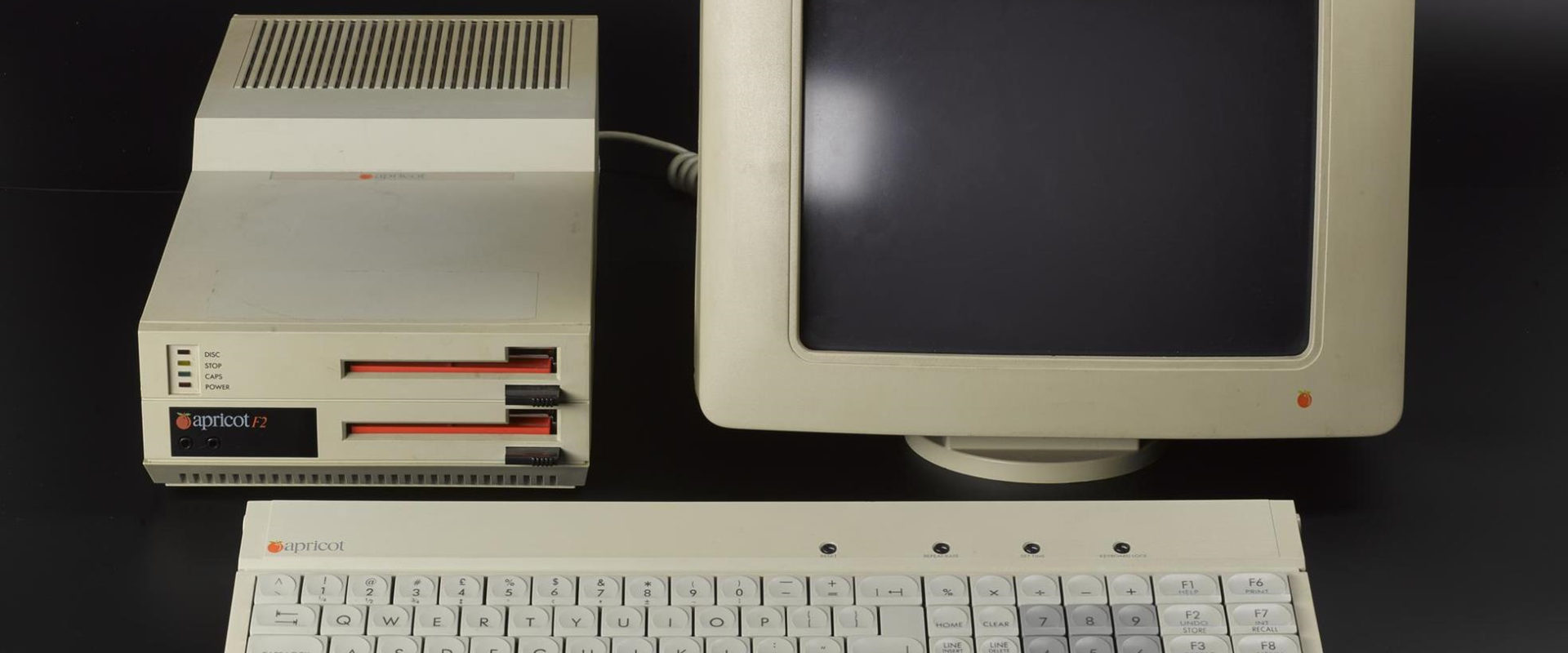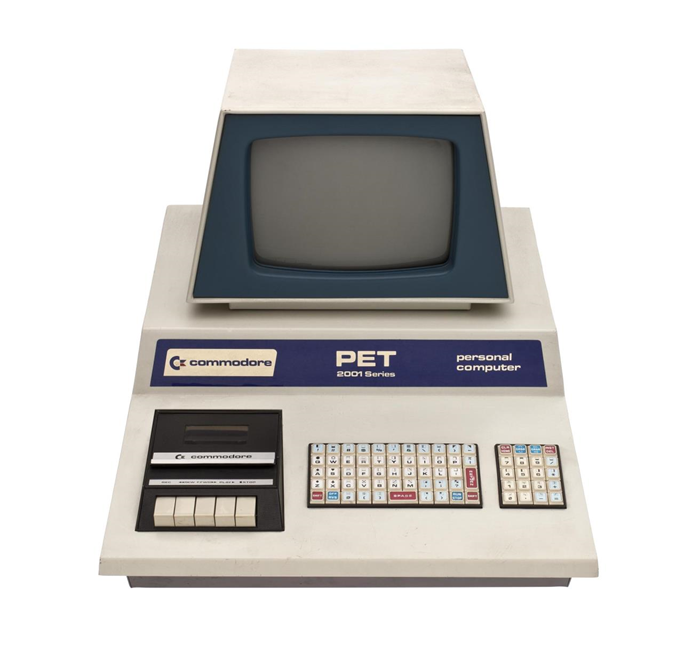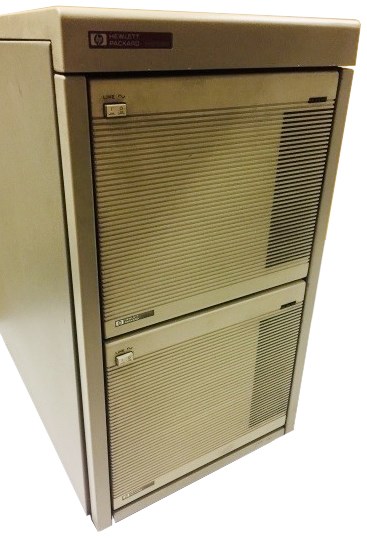Key in a search term below to search our website.
Key in a search term below to search our website.

Today, you can fit a terabyte of data on a usb stick, but back in the early 80s a typical hard disc drive was about the size of a washing machine.
So when the Scottish company Rodime Plc of Glenrothes invented and patented the world’s first 3.5 inch hard disc drive in 1983, this was a real leap forward in personal computing.
Commodore, Atari and Apple first demonstrated the market potential for small ‘personal’ computers. But, the game-changer was the original IBM PC launched in August 1981. With an entry model priced at $1565, the IBM PC launch was an immediate success. It was small, lightweight and easy to use. People liked it, and more than 40,000 were ordered on the day of the announcement.

Commodore PET computer, 2001 series, an early desktop from the first generation of computers, Commodore, USA, c. 1977. Museum Reference: T.1986.481

Commodore PET computer, 2001 series, an early desktop from thE first generation of computers, Commodore, USA, c. 1977. Museum Reference: T.1986.481

The HP 7937 hard disc drive circa 1980. Capacity around 570MB. Museum reference: YT.2019.291
Computers need to store the large amounts of data they use, and magnetic storage has long been the preferred solution, either on floppy discs, hard discs or magnetic tape.
Most of the early PCs (including IBM) shipped with 5.25” floppy disc drives. Each disc held a few hundred kilobytes of data, but this soon proved to be a limitation not only in capacity but also in speed of access to the data.
Hard disc drives provide much higher capacity and faster access. However, a typical hard disc drive in the early 80s was about the size of a washing machine, consumed vast amounts of power, and was very expensive.